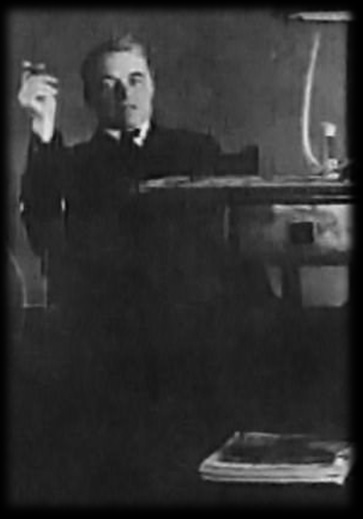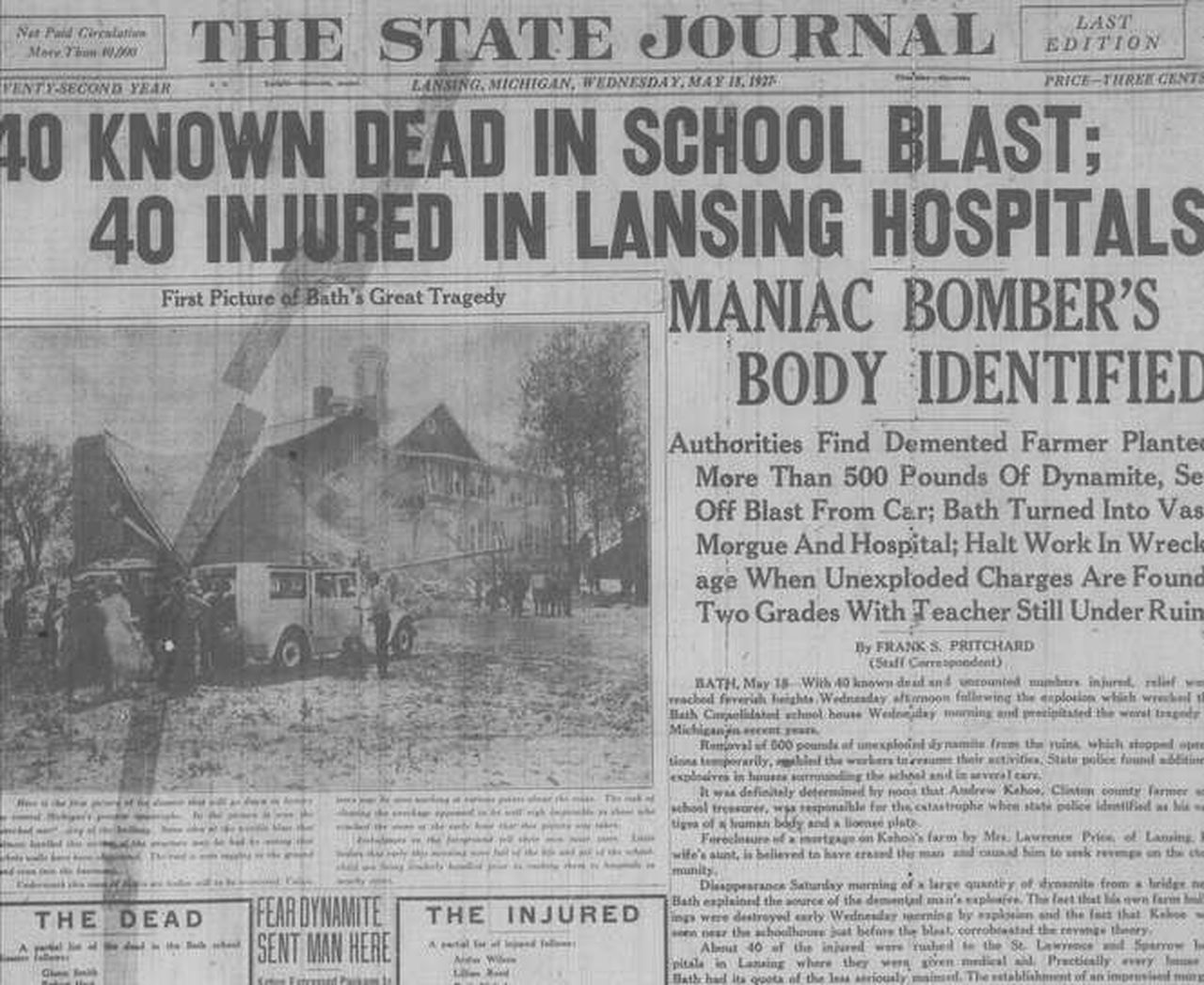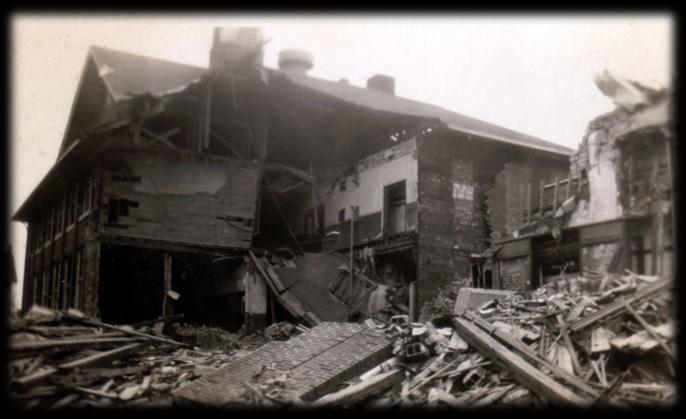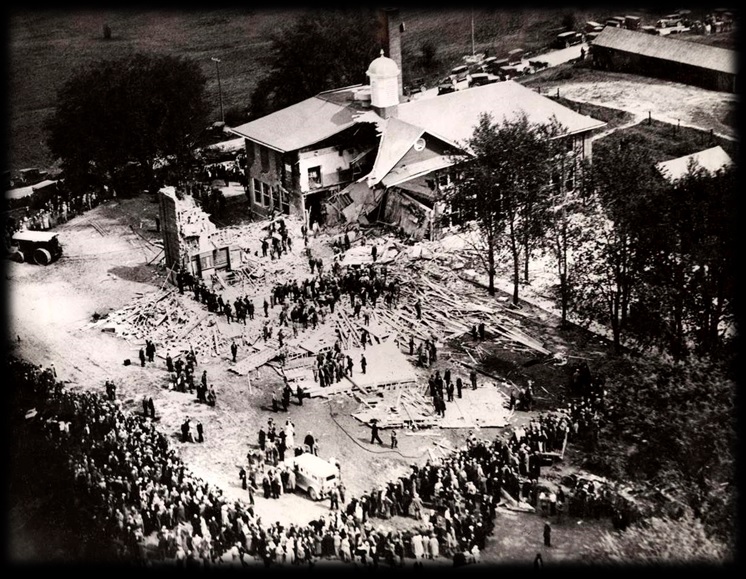


Within the past decade names such as Columbine and Virginia Tech have come to symbolize mass murders at schools. And while the media portrayed them both as the worst school killings ever, not only are they wrong, the truth is actually even worse than most people can imagine.
For that story we need to go back eighty years to Bath Michigan, a small community located ten miles northeast of the city of Lansing. In the early 1920s the area was primarily agricultural but in 1922 local voters voted to form a district for the purpose of funding and constructing a consolidated school. There were 236 students enrolled when the school opened, ranging from the first to twelfth grades.
To fund the schools, a tax was levied on property owners in the area. Andrew Kehoe was the treasurer of the Bath Consolidated School board however he was not in favor of the assessments. Worse yet, Kehoe blamed the property tax levy for his family's declining financial condition and repeatedly accused superintendent Emory Huyck of financial mismanagement. In reality, Kehoe was a poor farmer and a lousy money manager but that didn’t stop him from blaming others for his misfortune.
Beginning in the summer of 1926, Kehoe began purchasing over a ton of pyrotol, an incendiary introduced in World War I. At the time no one really saw a cause for alarm as farmers used the substance for excavation.
In November 1926, Kehoe drove to Lansing and purchased two boxes of dynamite at a sporting goods store. Even though the explosive is commonly used in farming, to avoid arousing suspicion Kehoe made sure to only purchase small amounts from multiple locations. When neighbors complained of hearing explosions on his farm Kehoe explained he was using dynamite for tree stump removal.
Later that year the school board tasked Kehoe with performing maintenance inside the school building. Regarded by most as a talented handyman, he was known to be familiar with electrical equipment and as a board member appointed to conduct repairs, he had free access to the building and his presence was never questioned.
By mid May 1927 Kehoe was ready to hatch his evil plot. With his wife Nellie suffering incurable tuberculosis and his farm in foreclosure, Kehoe packed his car old tools, nails, pieces of rusted farm machinery, shovels and anything else capable of producing shrapnel during an explosion. After the back seat was filled, Kehoe placed a large cache of dynamite behind the front seat and a loaded rifle on the passenger's seat.
The morning calm of May 18th was rocked when Andrew Kehoe set off the first of his planned bombs. In addition to turning his three story farmhouse into little more than a scorched lot with a brick chimney, all the Kehoe farm buildings were destroyed and the animals trapped inside the barn were vaporized. (Ironically, the amount of unused equipment and materials on the farm could have easily paid off the Kehoes' mortgage and stopped his foreclosure).
As the volunteer fire department raced to the scene, neighbor Monty Ellsworth saw Kehoe headed towards the town school smiling and waving.
At 9:45 am a pre set bomb set a massive explosion ripping through the school building. First-grade teacher Bernice Sterling recounted the blast to an Associated Press reporter as being like a terrible earthquake. “It seemed as though the floor went up several feet. After the first shock I thought for a moment I was blind. When it came the air seemed to be full of children and flying desks and books. Children were tossed high in the air; some were catapulted out of the building.”
The north wing of the school had collapsed. Parts of the walls had crumbled and the edge of the roof had fallen to the ground. Another witness recounted, "there was a pile of children of about five or six under the roof and some of them had arms sticking out, some had legs, and some just their heads sticking out. They were unrecognizable because they were covered with dust, plaster, and blood. There were not enough of us to move the roof."
But Kehoe still wasn’t done; as soon as he arrived at the school he summoned the superintendent over to his vehicle. As soon as he came within range Kehoe threw a switch inside of his car that detonated the dynamite killing not only both men but also three others standing within the blast zone.
When the dust settled the aftermath was staggering: 44 people were dead and another 58 severely injured. The school and the Kehoe farmhouse were a complete loss. Later as investigators searched Kehoe’s property they found a wooden sign wired to the farm's fence with one last message, "CRIMINALS ARE MADE, NOT BORN." stenciled on it.
On August 22, 1927, some three months after the bombing, fourth-grader Beatrice Gibbs died following hip surgery. She was counted as the 45th and final death directly attributable to the Bath School disaster.
Today there are a number of memorials in Bath Michigan including a museum on the site of where the school once stood. On November 3, 2008, it was announced that tombstones had been donated for Emilie and Robert Bromundt, the last two bombing victims whose graves were still unmarked. A grant from a private foundation will pay for the headstones.

Andrew Kehoe 1920




